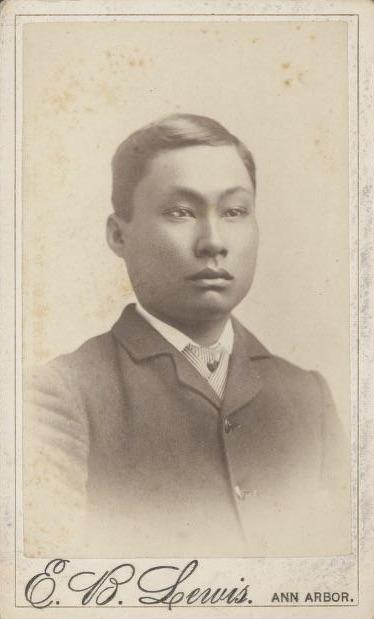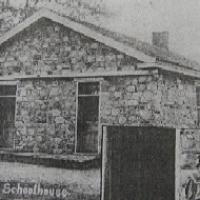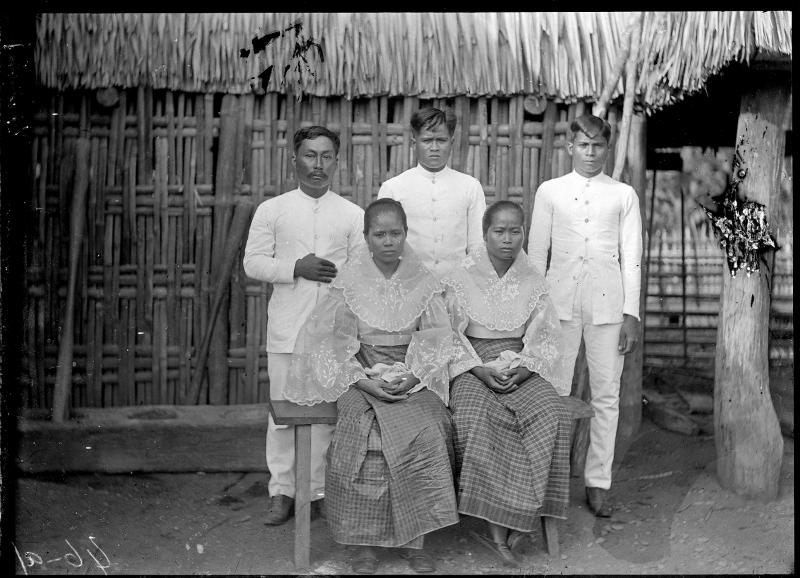The Life of Mateo Francisco
Mateo Francisco’s remarkable life defies the narrative applied to him by the American colonists who saw great personal profit from his exploits. Brought to Michigan as a young teenager in 1875, the story of his life would intertwine with the so-called “Michigan Men” for decades until his last known updated archival appearance c. 1924.[1] The archives expose the consolidation of colonial surveillance, arguably the most significant tool of subjugation wielded by the American regime in the Philippines.[2] But the lens of American surveillance, statistics, surveys, and imperialist rhetoric often obscures the intimate, imperial domesticity that historian Ann L. Stoler posits to be the core of empire.[3] Mateo Francisco’s life as documented in the University of Michigan’s archives demonstrates some of the layers of intimacy and identity that most fundamentally characterized U.S. colonialism in the Philippines. Further, the account of his life exposes many of the holes that riddle imperial archives in relation to their colonized actors— even those who willingly contributed to the archive’s–that is, empire’s–creation.
Biography
Sources suggest Mateo Francisco was born on August 23, sometime between 1860-1862, in Ayala, a town near Zamboanga City, Mindanao.[4] Despite several origins being attributed to him over the course of his life, his ancestry and cultural background remain uncertain. In lieu of his own direct narration, it is most tempting to endorse Carl Guthe’s description shared in a letter to the Michigan Alumnus ascribing Visayan heritage to Mateo Francisco; further, Guthe claims that Francisco’s father was a formerly enslaved person.[5] However, Guthe's depictions of Filipino people were heavily informed by his imperialist perspective and racist biases, undermining his reliability as narrator.[6] At the same time, it is very likely that Francisco’s father was once enslaved. Many people enslaved within the Sulu Sultanate escaped to Zamboanga and as a result, a large percentage of the 19th-century population was descended from such persons.[7]
On November 4, 1874, Joseph Beal Steere recorded enlisting the work of a Filipino boy named “Mateo” as a guide while in Zamboanga.[8] In exchange, Steere wrote, he would take the youth back to Michigan with him to be furnished with an education.[9] Curiously, he also described needing to obtain some kind of guardianship or wardship over Francisco in order to complete this process legally. Whether or not Francisco’s parents consented to or were involved in any part of this agreement is unclear. These last details most clearly emphasize the bizarre and suspect circumstances shrouding Francisco’s immigration. Taken at Steere’s word, the ethos of this agreement foreshadows the American imperial policy of “benevolent assimilation” in the Philippines.[10] Mentoring an adolescent into adulthood was a literal parallel with the forthcoming racist, paternalistic idea of mentoring the Filipinos into citizens capable of self-government. In a more skeptical reading, Steere was offering the pretext to commit labor trafficking; the extent of an education Mateo Francisco actually received in the U.S. is rather questionable. From Francisco’s perspective, there are several important questions that should be considered. For instance, was the decision to leave made by the young Francisco, or made on his behalf by another? What kind of education did he anticipate receiving abroad, from Steere? Living in the U.S. with Steere could’ve offered not just access to education and other resources, but protection from fighting back home as well. Therefore, did he perhaps leave Mindanao to escape danger in the turbulent locale?
Mindanao’s Zamboanga peninsula, where Mateo Francisco seems to have lived the majority of his life, constitutes the northwestern outcrop of the Philippines’ southernmost major island. At the time of Francisco’s birth, the neighboring Sulu Sultanate was a waning polity in Southeast Asia.[11] However, slave raiding, an integral part of the Sulu Taosug’s expansive maritime economy, continued in the Philippine islands into the mid-19th century as it was principally conducted by the diaspora communities of the Balangingi Samal.[12] Military conflict in Mindanao between various groups collectively labeled “Moros,” among them the Taosug and the Samal, and encroaching imperial powers would persist throughout decades of colonial transitions.[13] Fear and unrest in the region were likely high during Francisco’s life, particularly considering the ever uncertain integrity of successive colonial states. Even after his return from the States, massacres intended to quell Muslim resistance to the U.S. army in Mindanao would persist until 1913, sustaining the Philippine-American war for an additional eleven years beyond its conclusion in the north.[14]
Francisco’s time in Michigan with Steere is not well documented. In fact, much of what is known was recounted by Francisco decades later to the American archeologist Carl Guthe during his 1922-25 expedition to the Philippines. According to Guthe’s letter, Francisco claimed to have attended the Stone School in Pittsfield, a primary school where Steere’s wife was a teacher.[15] While a photograph of Mateo Francisco appears in the university’s alumni files, albeit with first and last name reversed, there is no formal indication that he attended the University of Michigan.[16] This is in spite of Steere being both professor of zoology and curator of the University’s first museum at the time.[17] It’s possible that Francisco did work for Steere in the museum or on his farm in Pittsfield, but there is no known documentation to support this. Coming to the U.S. perhaps as young as twelve, Francisco would spend some of the most impressionable years of his life stateside. Separated from his family and likely isolated initially by cultural and linguistic barriers, his closest point of contact with home would’ve been Steere. He received at least a cursory education, if not a university degree. This must have had an enormous impact on him and his opinions of Americans and American culture.
In 1887, Mateo Francisco returned to the Philippines as a member of Steere’s second scientific expedition.[18] Several future colonial officials participated in this trip cataloging birds and other wildlife, including Dean C. Worcester.[19] This is likely how Worcester and Francisco met, although it may have been earlier than this, by chance. Francisco was responsible for the collection of a vast number of animal specimens from the islands, including dozens of birds and the “family” of three tamaraw the museum would put on display.[20] Steere also records him as being heavily involved in the collection and packing of shells and corals.[21] The disparity of labor performed by the only Filipino member of the expedition and the American academics as recorded by Steere is stark. While Francisco was a naturalized U.S. citizen by 1887, there’s no currently known evidence of his having gone to America again after this point.[22] Between 1888-1889, there is however evidence from the American ambassador in Manila that Francisco was still receiving payment from Steere for the continued collection of specimens.[23]
In 1890, Francisco would be employed as a hunter/tracker for one final American zoological expedition, this time headed by Worcester on behalf of the University of Minnesota.[24] A decade later Francisco would be employed by Worcester once again, this time as an interpreter in Manila— although which language(s) he interpreted are, like many things about him, unclear.[25] He probably interpreted some dialect(s) of Visayan and perhaps other Filipino languages. If his interpretative work was mainly administrative, he would likely have translated Spanish as well. Working during the Philippine-American war, this is probably the first example of Francisco undertaking work alongside the “Michigan Men” once their role had become that of the Philippine’s direct colonizer. Francisco had been under the custody of Americans from the time of his childhood, therefore externally significant policy changes may not have significantly altered his perception of relationships that had existed for decades. In one of his most famous writings from 1898, Worcester had described Francisco as the ideal Filipino subject, marking him as the prototype for U.S. imperialism.[26] The now-codified colonial power dynamic had characterized Francisco’s association with men like Steere and Worcester from the beginning.
Beyond interpretive work, some limited evidence suggests that Mateo Francisco may have served for the U.S. military in Siocon Bay in 1901.[27] If indeed Francisco did serve, the nature of his military service is not immediately apparent— he may never have seen combat. Indeed, his interpretive work itself may have constituted his military service. He could’ve been motivated to aid U.S. forces by a desire for stability. This would be the same reason Muslim leadership in Zamboanga would support the American regime a decade later.[28] In a more utilitarian light, it may have simply been another way to accrue sufficient capital to become the owner of a business, specifically a sawmill.[29] It’s currently unclear whether he financed the original construction of the mill or if he purchased one already extant. His socioeconomic status relative to the community he lived in is not immediately apparent, but as a property owner and businessman affiliated with the American regime he could have had powerful economic incentives to support American colonialism.
Mateo Francisco’s last recorded residence in the University archives was in Siocon Bay, Mindanao, where Guthe reportedly visited him in 1924.[30] While Francisco’s name doesn’t appear in Guthe’s financial records of his expedition, multiple extracted artifacts were recorded as being collected from Francisco himself, or with his aid.[31] This may not have been the last time Francisco worked alongside Americans, but it does appear to be his last brush with the “Michigan Men.” Seemingly well established in his community, probably comfortably furnished from his long and varied career, there is a presumptive urge to imagine Francisco settled into tranquil retirement. However, the last chapters of a thoroughly unpredictable life cannot be nailed down to probabilities and assumptions. University documentation contains a rough estimate of the year of his birth, but no hint as to when, where, or how he might have died.
Living Legacy
The archival record that contains Mateo Francisco is not only an avenue for reconstructing the past, but a potential resource for constructing identities in the present. This becomes problematic for individuals like Francisco, who had a hand in populating the archives with sources and museums with specimens, but lacked meaningful control and ownership of representations of themselves. Compounding layers of misinformation present across different sections of the archives, tailored to separate perspectives and fulfilling various ideological purposes, collide here, creating a multiplicity of distortions. Zamboanga: A World Between Worlds, Cradle of an Emerging Civilization, a book written in 2003, repurposes a Worcester photograph taken from the collection of a museum in Manila that identifies its own source as the Philippine National Library.[32] The information provided only vaguely resembles the caption Worcester turned over to the University of Michigan, itself of dubious authenticity because of Worcester’s propagandist hand.[33] Even if the book’s information was accurate, Mateo Francisco goes unnamed; Worcester does not.
In the more literal sense of a living legacy, Mateo Francisco had a wife and six children and probably still has descendants surviving him today. Some of them may still live in the barangay in Siocon bearing his name.[34] Criticizing what kinds of information go into an imperial archive and their utilization, especially in terms of the misrepresentation of indigenous and/or colonized peoples, one inevitably encounters a last piece of information; the boundaries of a discrete repository are physical but artificial, real and yet not reflective of the physical, human reality of the subjects captured within it. Sometimes identifying an archive’s limits indicates that the scope of research cannot be adequately contained within the imperial purview. So for Francisco himself, perhaps this is the end of the trail. But the end of the University’s knowledge isn’t the conclusion of all knowledge, just as the colonial state’s command of power didn’t represent the totality of power in the Philippines. Mateo Francisco’s life challenged the colonial narratives it was used to construct, and so too does it defy a simple, clean ending.
Notes:
[1]Carl E. Guthe, “From State Street to Savage Hut,” in The Michigan Alumnus, vol. 31, (Ann Arbor: Alumni Association, 1925) 61.
[2]Vicente L. Rafael, White Love: And Other Events in Filipino History, (Durham: Duke University Press, 2000), 22-23.
[3] Ann Laura Stoler, Haunted by Empire: Geographies of Intimacy in North American History, (Durham, NC: Duke University Press, 2006), 3.
[4] Guthe, “From State Street,” 61.
[5] Guthe, “From State Street,” 61.
[6]"Carl Eugen Guthe's Expeditions," The Philippines and the University of Michigan, 1870-1935, https://philippines.michiganintheworld.history.lsa.umich.edu/s/exhibit/page/Carl_Guthe_Expeditions
[7] James Francis Warren, The Sulu Zone, 1768-1898: The Dynamics of External Trade, Slavery, and Ethnicity in the Transformation of a Southeast Asian Maritime State, (Singapore: NUS Press, 2007 [1981]), 235-236.
[8] “November 4, 1874,” Box 1, Diaries and Travelogues, Macao, Philippines, Formosa 1873, Joseph Beale Steere Papers: 1861-1941, Bentley Historical Library, University of Michigan.
[9] “November 4,” Steere papers.
[10] Rafael, White Love, 21
[11] Warren, The Sulu Zone, 196.
[12] Warren, The Sulu Zone, 178-182.
[13] "Creating the Moro Subject: Resistance and Pacification," The Philippines and the University of Michigan, 1870-1935, https://philippines.michiganintheworld.history.lsa.umich.edu/s/exhibit/page/creating-the-moro-subject
[14] "Creating the Moro Subject."
[15] Guthe, “From State Street,” 61; Gael Graham and Elaine Watson, “Biography,” Joseph Beal Steere Papers finding aid, https://quod.lib.umich.edu/b/bhlead/umich-bhl-85831?view=text.
[16] Mateo Francisco, Individual photographs, Alumni Association Records, Bentley Historical Library, University of Michigan.
[17] Graham and Watson, “Biography.”
[18] Kerstin Barndt and Carla Sinopoli, Object Lessons and the Formation of Knowledge: The University of Michigan Museums, Libraries, and Collections, (Ann Arbor, MI: University Michigan Press, 2017) 115-116
[19] Barndt and Sinopoli, Object Lessons, 115-116
[20] Ibid.
[21] “December 1887,” Diaries and Travelogues, Philippines 1887, Box 1, Joseph Beale Steere Papers: 1861-1941 Bentley Historical Library, University of Michigan.
[22] "United States Passport Applications, 1795-1925," database with images, FamilySearch (https://familysearch.org/ark:/61903/3:1:3QS7-89DC-N6K6?cc=2185145&wc=3XCT-W38%3A1056306401%2C1056383401 : 22 December 2017), (M1372) Passport Applications, 1795-1905 > Roll 296, vol 630, 1887 Jun > image 336 of 1299; citing NARA microfilm publications M1490 and M1372 (Washington, D.C.: National Archives and Records Administration, n.d.).
[23] Letter to J.B. Steere from Alex R. Webb, May 4 1889, Box 1, General Correspondence, 1877-1924, Joseph Beale Steere Papers: 1861-1941, Bentley Historical Library, University of Michigan.
[24] Dean C. Worcester & Bourns, F. S., 1893, “Letters from the Menage Scientific Expedition to the Philippine Islands,” Journal of the Minnesota Academy of Science, Vol. 4 No.1, 131-172. Retrieved from https://digitalcommons.morris.umn.edu/jmas/vol4/iss1/10.
[25] Guthe, “From State Street,” 61.
[26] Dean C. Worcester, The Philippine Islands and Their People, (New York: The Macmillian Company, 1898) 220-222
[27] Ancestry.com. U.S., Veterans Administration Master Index, 1917-1940 [database on-line]. Lehi, UT. USA: Ancestry.com Operations, Inc., 2019. Original data: United States, Veterans Administration Master Index, 1917-1940. Salt Lake City, Utah: FamilySearch, 2019. NAI 76193916. Record Group 15: Records of the Department of Veterans Affairs, 1773 - 2007. National Archives at St. Louis, St. Louis, Missouri, U.S.A. https://www.ancestry.com/discoveryui-content/view/1531255:61861?tid=&pid=&queryId=ee7b1edb8b4045ad774e33553bf7c786&_phsrc=oOV17&_phstart=successSource.
[28] Kawashima Midori, The "white man's burden" and the Islamic Movement in the Philippines: The Petition of Zamboanga Muslim Leaders to the Ottoman Empire in 1912. (Kiochio, Chiyoda-ku, Tokyo, Japan: Institute of Asian Cultures, Sophia University, 2014) #
[29] Guthe, “From State Street,” 61.
[30] Guthe, “From State Street,” 61.
[31] Carl E. Guthe’s field notes from May, 1924, Courtesy of the University of Michigan Museum of Anthropological Archaeology.
[32] Felice Noelle Rodriguez, Zamboanga: A World Between Worlds, Cradle of an Emerging Civilization, (Pasig City: Fundación Santiago, 2003) 27; “Five mestizos from Manila,” from Filipinas Heritage Library, https://www.filipinaslibrary.org.ph/biblio/16479/.
[33] Dean C. Worcester, “A group of Zamboangueños, Mateo Francisco standing at right.” Ayala, Zamboanga (1891), Dean C. Worcester Photographic Collection, Courtesy of the University of Michigan Museum of Anthropological Archaeology. UMMA 46A001.
[34] “Mateo Francisco,” Philatlas, https://www.philatlas.com/mindanao/r09/zamboanga-del-norte/siocon/mateo-francisco.html.



